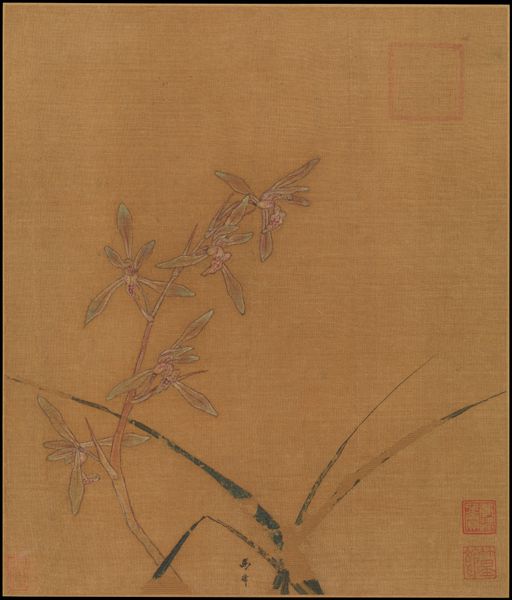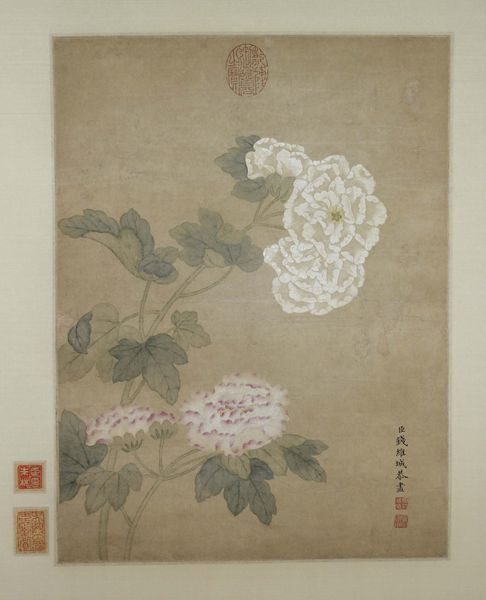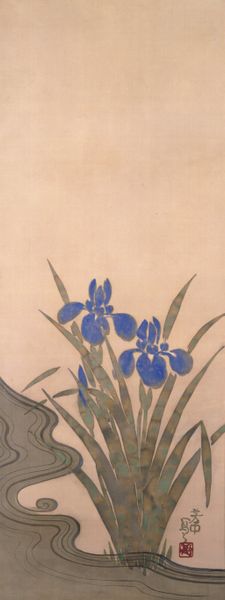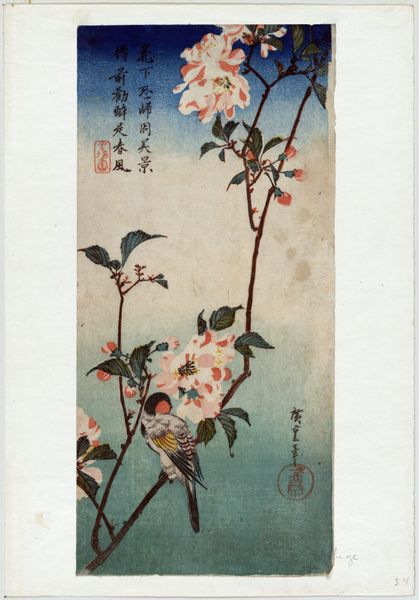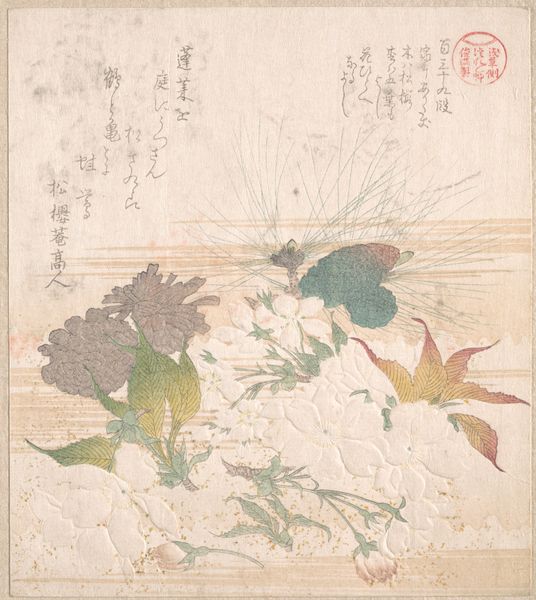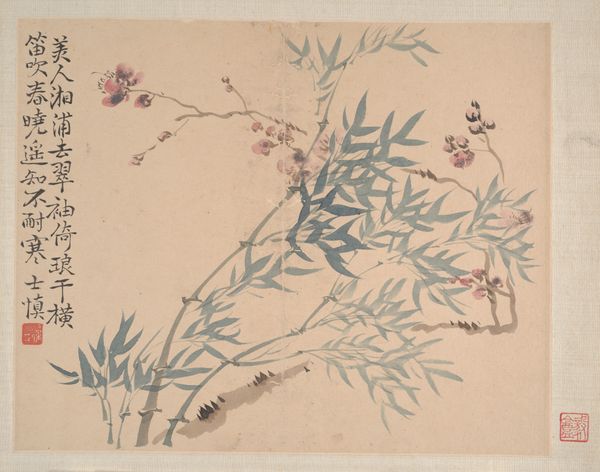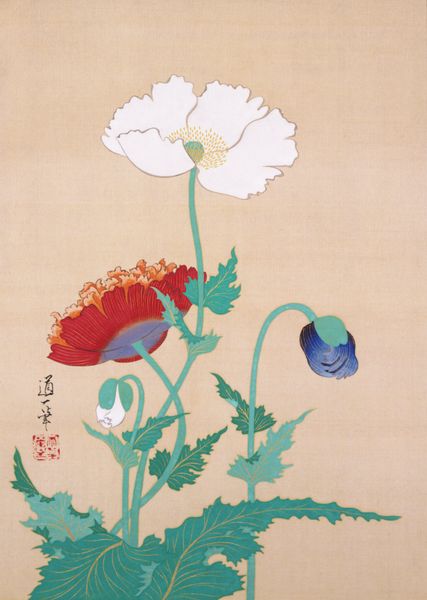
painting, paper, watercolor, hanging-scroll
#
water colours
#
painting
#
asian-art
#
ukiyo-e
#
japan
#
figuration
#
paper
#
watercolor
#
hanging-scroll
#
coloured pencil
#
line
Dimensions: 8 1/8 × 6 3/4 in. (20.64 × 17.15 cm) (image)43 7/8 × 16 1/4 in. (111.44 × 41.28 cm) (mount, without roller)
Copyright: Public Domain
This delicate image of a narcissus comes from the hand of Nakamura Hōchū. Here, the narcissus is depicted in stark simplicity: white petals, green stems, a visual poem of purity and renewal. Yet, we cannot forget the flower's namesake, Narcissus of Greek myth, doomed by his own reflection, a symbol of vanity and self-obsession. This tale is not unique: across cultures, we see reflections and mirroring tied to the unveiling of truths, the duality of existence. The mirror, be it water or polished metal, shows not just what is, but what could be, or what we fear to be. In art, this has been rendered in countless forms, from the vanitas paintings of the Dutch masters to the veiled portraits of the Renaissance, each echoing our eternal confrontation with the self. Does Hōchū's narcissus speak of simple beauty or does it whisper of deeper, more unsettling truths? The cyclical nature of the flower's bloom reminds us that symbols never truly die; they merely transform, reborn in new contexts, laden with the echoes of ages past.
Comments
No comments
Be the first to comment and join the conversation on the ultimate creative platform.
